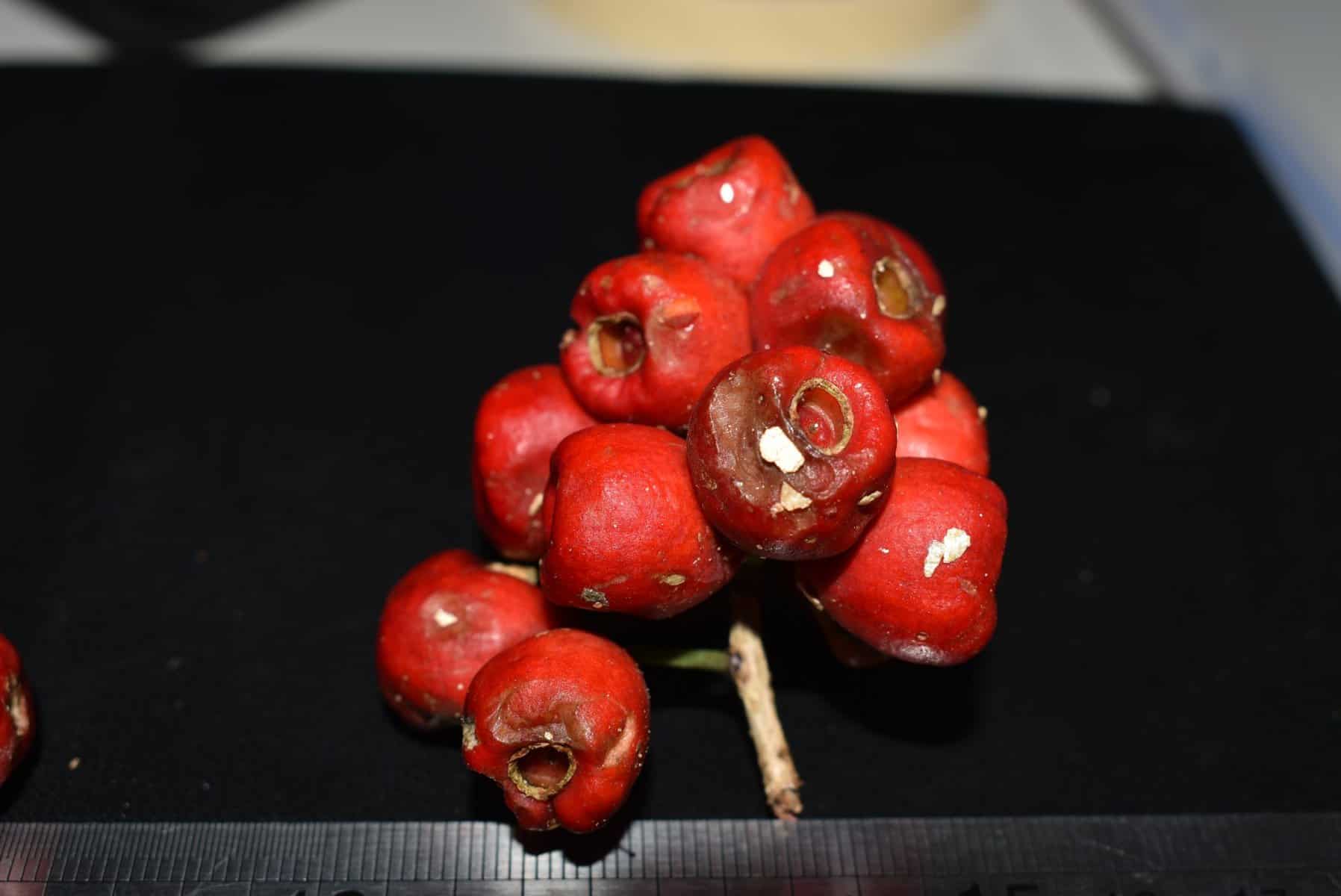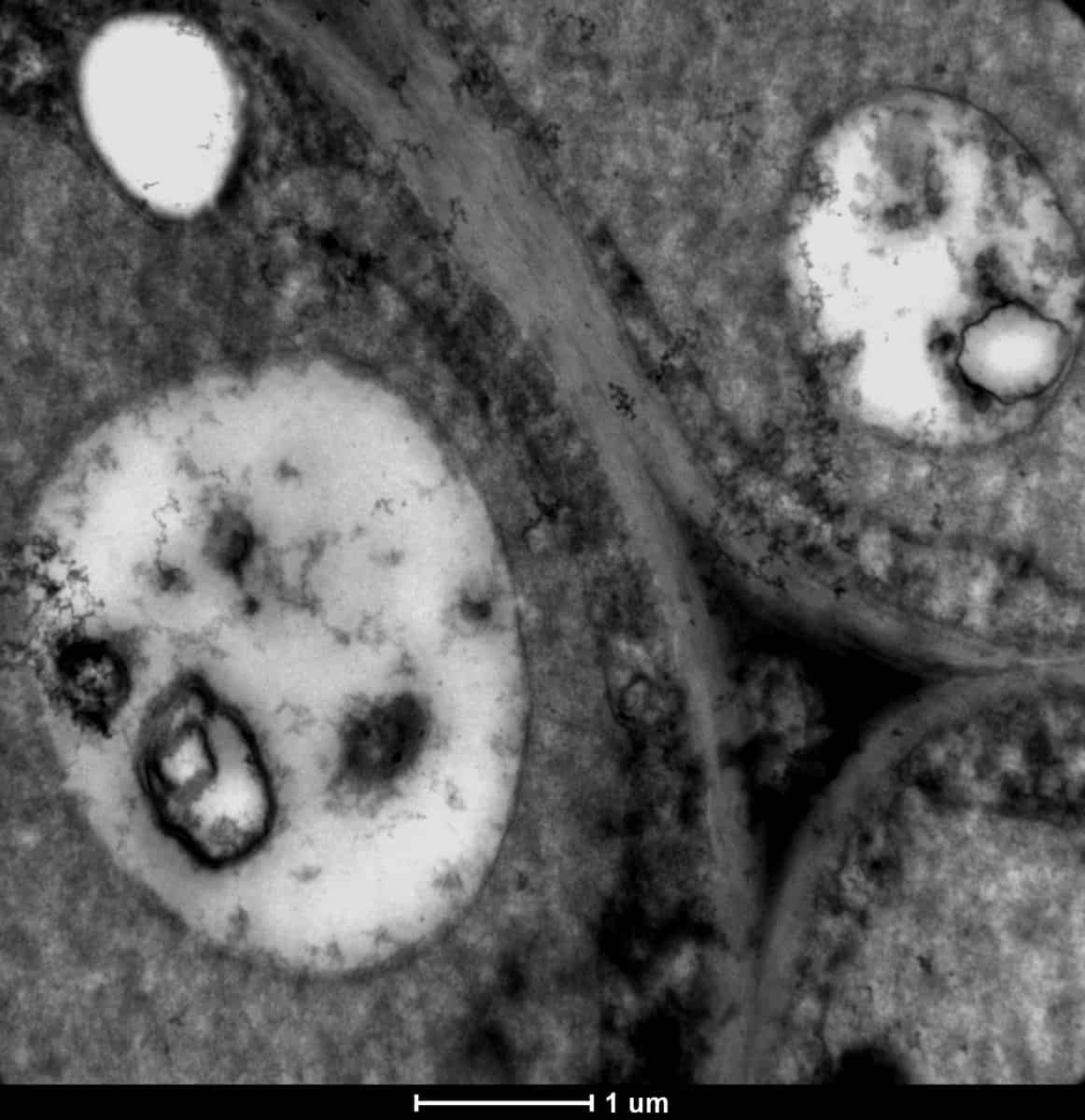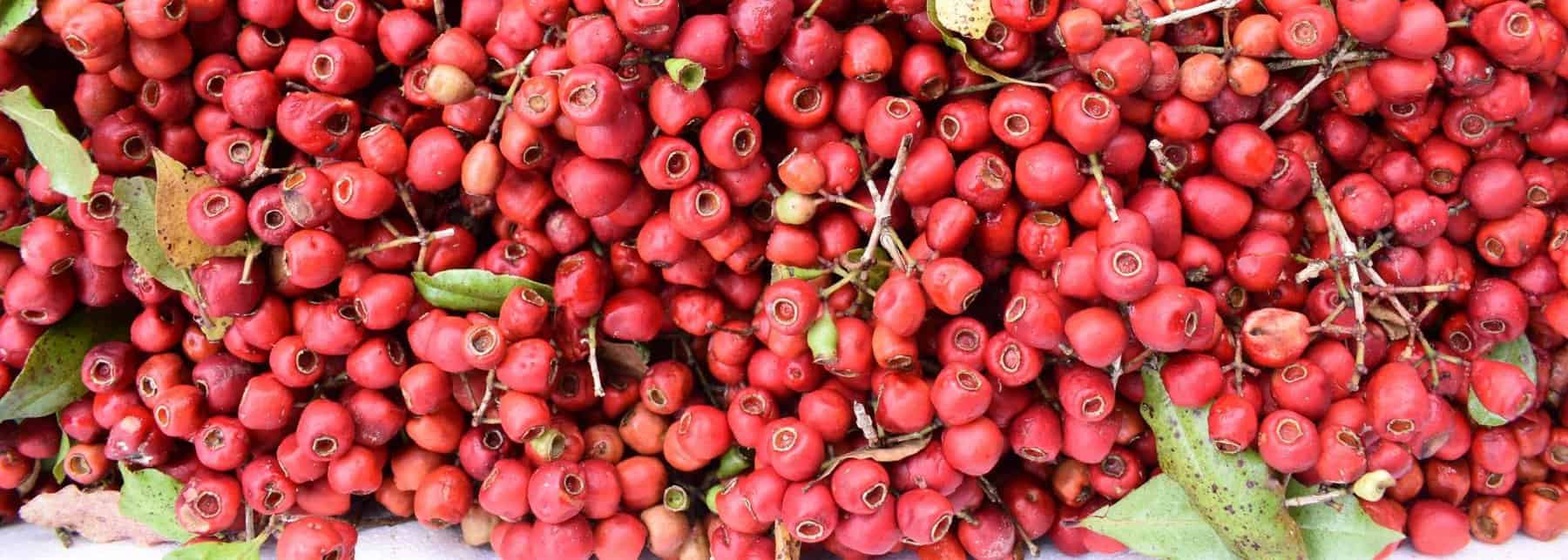The goal of seed banking is to preserve viable seeds for decades or centuries. Storing at below freezing temperatures is one of the best ways to ensure long term viability. However, sub-zero storage techniques, like cryopreservation (freezing in liquid nitrogen), require the removal of much of the seed’s water, a process called desiccation, since any moisture could form ice crystals that could damage or destroy the seed.
Some plant species, like Syzygium maire (maire tawake), have seeds that are sensitive to desiccation. Desiccation-sensitive seeds are termed “recalcitrant” and are more difficult to store than seeds that tolerate desiccation and cold temperature storage. The recalcitrance of Syzygium maire isn’t exactly a surprise – Syzygium maire has large, fleshy fruits, large embryos and occurs in a wetland habitat. These traits have been known to correlate with recalcitrant seeds.
One way to conserve desiccation sensitive species is to use the zygotic embryo. This is the part of the seed that will grow into new plant. In a research article recently published in the journal Plants, researchers explored several desiccation strategies and how these strategies impacted Syzygium maire seeds and zygotic embryos.


This study, funded by the Ngā Rākau Taketake Conservation & Restoration theme, investigated viability, oxidative stress, thermal properties, and ultrastructure of zygotic embryo axes that had been dried to various moisture contents using several desiccation strategies. A subset of these were then frozen, as is necessary for cryopreservation. Viability, oxidative stress, thermal properties, and ultrastructure were investigated in this group as well. By comparing these properties and observing what changes proved fatal to the zygotic embryo, researchers hoped to gather information that would be useful for developing species-specific cryopreservation protocols for Syzygium maire.
Some zygotic embryos did survive desiccation and were able to germinate and grow into plants. However, no zygotic embryos survived freezing, regardless of the desiccation strategy used.
During their investigation, researchers noticed that survival loss was accompanied by a significant drop in the activities of three oxidative enzymes. This suggests that oxidative stress, rather than structural damage, is the root cause of viability loss in these seeds.
This has led researchers to suggest that for cryopreservation to be successful for this species, future work should investigate faster cooling and warming rates coupled with the application of antioxidants. It is hoped that these techniques will promote embryo survival following freezing. It could also be that preserving an even smaller part of the seed, the embryo plumule (the rudimentary shoot or stem) would be a potential technique for the conservation of this species.
